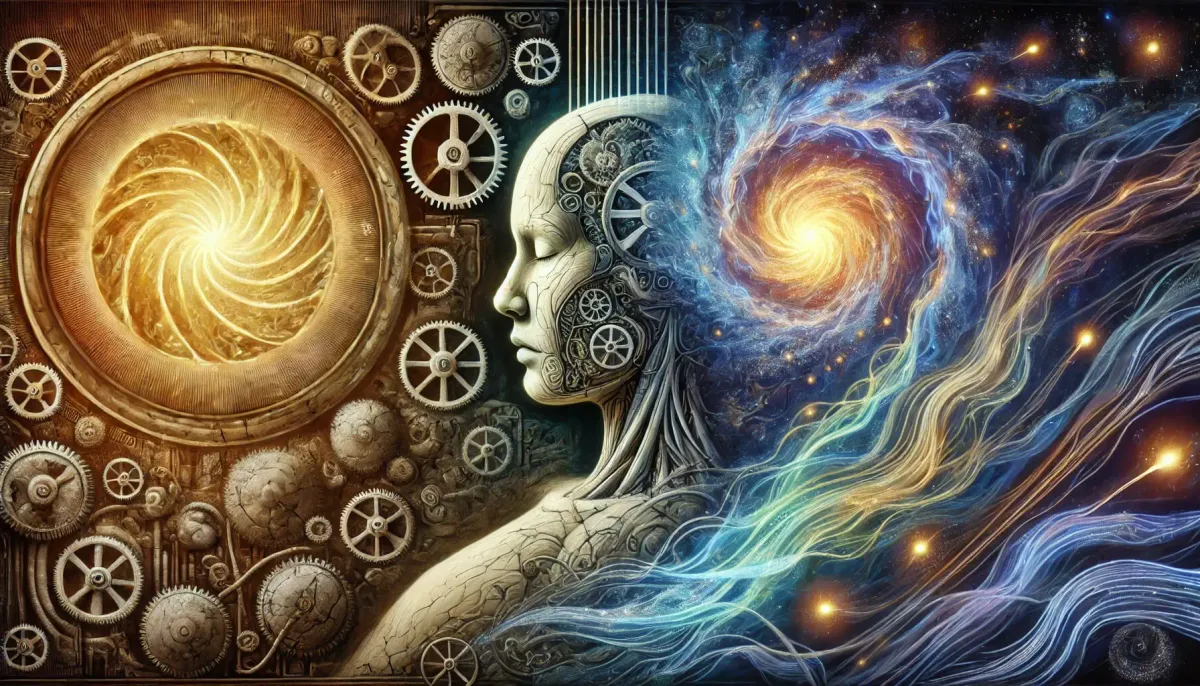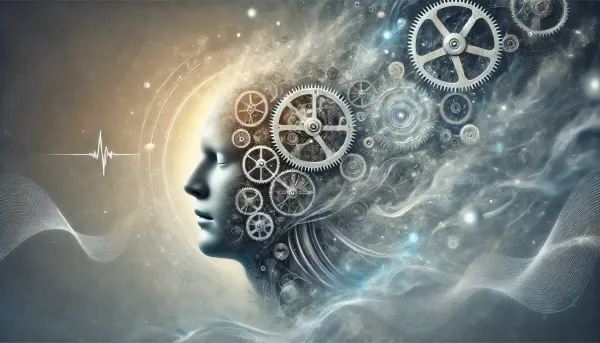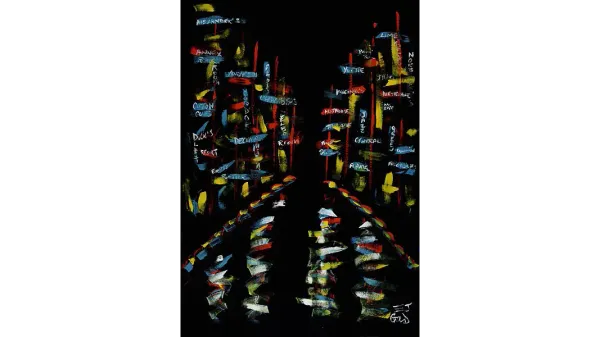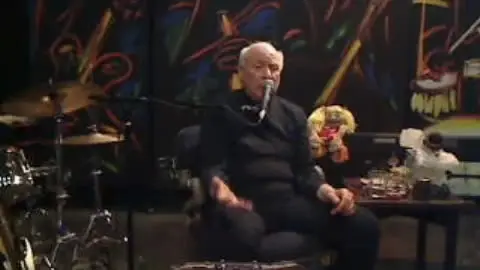Beginning Work
A vast factory stands silent, its machines lifeless—until the key turns, and it awakens. So too must we rouse the human machine from its habitual sleep. The challenge? Recognizing sleep, resisting illusion, and using wakefulness wisely.

Imagine a factory, vast and powerful, yet abandoned. Its machines are idle, covered in dust. It could create wonders, but instead, it sleeps. This is you. This is me. This is all of us—until we learn to turn the key, ignite the engine, and bring the machine to life.
🎧 Listen Now: Episode 8 of The HBM Show
The Purpose of Beginning Work
The first step is to recognize that transformation is not an end in itself but a bridge to something greater—a new way of being. Before we can engage in higher work, we must first awaken the machine, the human biological apparatus that operates under habitual, unconscious patterns. Left unchecked, it is ruled by mechanical impulses, guided by fixation and desire, unable to function beyond the sleep of routine existence.
The exercises we engage in are not mystical in nature. Their purpose is simple: to bring the machine into the waking state. Awakening breaks the hypnosis of daily life, allowing us to escape its wasteful automaticity. Each moment of wakefulness accumulates, creating a foundation for real change. Even if the machine falls back asleep, nothing is lost. Awakening must simply be repeated.
Awakening vs. Transformation
A common mistake is to assume that transformation itself is the goal. It is not. Transformation is only meaningful if it serves a higher aim: the ability to engage in conscious work. The machine must not only be awake; it must be stable in its wakefulness.
The Work—the real effort toward evolution—can only be perceived through an awakened machine. When the machine is asleep, our perception is limited, clouded by illusion and self-deception. This is why periods of awakening must not be wasted. They must be used to study the Work itself, so that we are prepared when transformation is fully realized.
The Science of the Machine
To work with the machine effectively, we must understand it. On a fundamental level, the human machine is a chemical factory, regulated by precise electrical impulses traveling through the muscular and nervous systems. It does not respond to vague intentions; it responds to exact methods.
Awakening does not happen through any specific activity. No single act—be it meditation, movement, or study—can force the machine into wakefulness. However, certain exercises can strengthen the will required to bring about awakening. The key is to activate two inherent attributes of the essential self: presence and will-of-attention.
The essential self, the true observer within, is not asleep. It exists apart from the machine, but in its undeveloped state, it lacks the power to direct the machine at will. It cannot force the machine to wake up permanently. It can only guide it toward awakening, moment by moment.
The Machine’s Resistance to Awakening
The machine does not welcome wakefulness. It has built-in defense mechanisms designed to resist the waking state, preferring the comfort of habitual sleep. This is the machine’s way of maintaining control.
Understanding this resistance is critical. Without this knowledge, we may mistake these obstacles for failure, when in fact, they are signs that we are approaching something real. The machine defends itself precisely because awakening threatens its dominance. Our task is not to fight this resistance head-on but to work skillfully, using exact strategies to bypass its defenses.
The Role of Discernment
A key aspect of beginning work is developing discernment—the ability to recognize when the machine is awake and when it is asleep. Without this, we risk deluding ourselves, mistaking moments of mechanical activity for true wakefulness. If we assume we are already awake, we will not make the effort to awaken. If we act as if we are conscious when we are not, our results will be imaginary, leading us in circles rather than forward.
At the same time, when we are truly awake, we must not squander those rare moments. It can be tempting to use them for personal pleasure or self-indulgence, but these are the times when real work must be done. Awakening is precious. It must be used wisely.
The Path Forward
So how do we awaken the machine? The answer is not a single technique but a strategic approach. We must learn how to:
- Recognize the sleeping state and understand its patterns.
- Cultivate presence and will-of-attention to engage the essential self.
- Use precise exercises to bring about wakefulness.
- Disarm the machine’s defenses without triggering resistance.
- Apply discernment to determine when true awakening occurs.
The details of these methods will be explored in depth as we progress. For now, our task is simple: observe the machine. See it for what it is—a powerful apparatus, designed for transformation but trapped in sleep. By studying its mechanisms, we take the first step toward real work.















